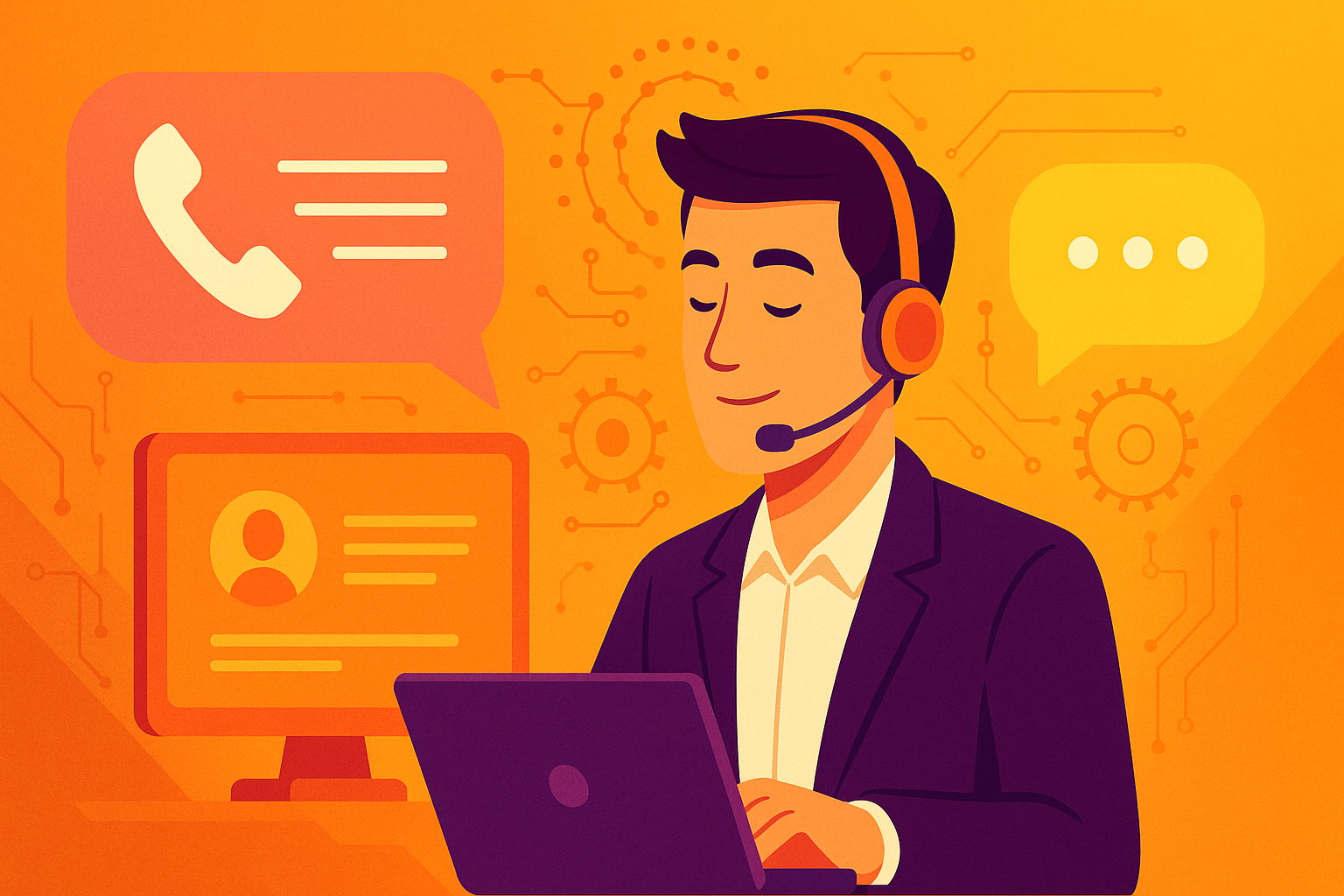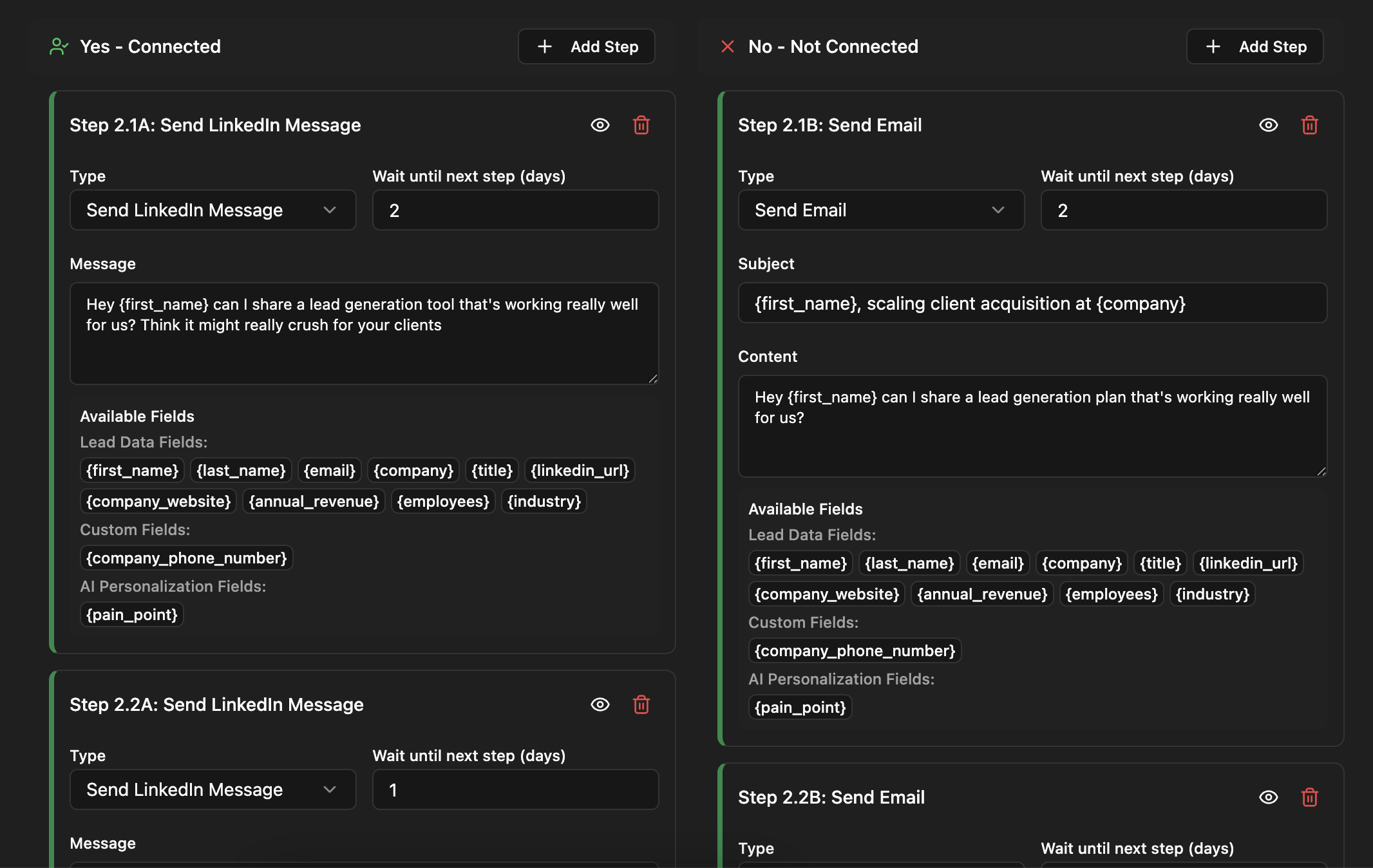
When you implement AI sales automation as a system, outreach stops looking like spam and starts creating pipeline. You get predictable lift, higher revenue per employee, and true personalization at scale. The difference comes from disciplined workflows and focused messaging.
This playbook is action first. You will get concrete workflows, prompts, templates, and guardrails you can put in place this week using Victoria AI’s AI SDR and AI Operating System. Sellers who partner with AI are 3.7 times more likely to meet quota, according to Gartner’s 2024 survey.
Forrester’s TEI study via Salesloft reported about a 20 percent response lift, roughly 50 percent conversion lift to opportunity, and a 3.3 times ROI, showing the upside when you operationalize, not just buy tools (Forrester TEI via Salesloft).
This is not a feature tour. It is an operating playbook with reproducible steps.
AI sales automation for outreach means adding leads, creating AI Personalization Fields, defining the sequence between email and LinkedIn, and setting the responder to book meetings for you with full context of your company and offer when positive responses come in. Think of it as a reliable AI SDR that never forgets context and never breaks guardrails.
The system covers four jobs:
Build a system, not just a stack. Data sync, compliance, deliverability, and human‑in‑the‑loop control form the operating model. Tools plug in, but the system scales.
Victoria AI’s AI SDR automates research, personalization, email + LinkedIn outreach, and meeting booking, with analytics and A/B testing.
Your mandate is simple. Lift pipeline without adding headcount while protecting your brand with deliverability, compliance, and authenticity guardrails.
Low‑quality mass AI messages create backlash.
Winners use high‑signal personalization, multi‑touch value, and safe automation. Email replies often average 1 to 4 percent, and thoughtful, multi‑touch follow‑ups materially outperform single‑shot blasts, as shown in Gradient Works’ outbound benchmarks and QuickMail’s cold email statistics.
Use these figures as KPI targets for pilot and rollout. Define a clear reply‑to‑meeting‑to‑opportunity funnel, then instrument every stage.
Set up the core in four parts: leads, AI Personalization Fields, email + LinkedIn sequence logic, and the responder settings that book meetings on positive intent. Keep humans in the loop for first touches and sensitive industries.
Your CRM and attribution layer is the truth. Map fields for prospect metadata, intent labels, sequence IDs, opt‑out flags, owners, and opportunity sources. Use webhook or API calls for contact updates and deal creation. Ensure opt‑out sync across all channels you use.
The AI SDR includes email + LinkedIn automation, reply handling modes like Meeting Mode, Traffic Mode, and SDR Brief Mode, plus native A/B testing.
Text schematic: Leads → AI Personalization Fields → Channel‑Specific Messages (Email + LinkedIn) → Send Engine → Reply Classification/Meeting Booking → CRM Update and Attribution.
Set up dedicated domains or subdomains for outbound. Align SPF, DKIM, and DMARC, include a one‑click unsubscribe, and separate transactional and outbound mailstreams.
Warm up domains, cap daily sends, and monitor Gmail reputation in Gmail Postmaster Tools. Keep spam complaints under about 0.1 percent, ramp volumes gradually, and enforce DMARC using Google’s email sender best practices and SendGrid’s email deliverability guide.
Map fields for metadata, intent, campaign and sequence IDs, opt‑out flags, owner routing, and opportunity source. Every send and reply should write back.
Recipe: send a webhook or API call to Pipedrive to create or update the contact on first touch, then create a deal on positive reply with campaign attribution. Use the Instanly to Pipedrive integration example as a template and adapt it for your stack.
Feed AI Personalization Fields with company news, product pages, tech stack, job changes, and posted content. Avoid scraping that violates terms of service.
Structure prompts with objective, tone, variables, and hard constraints. For example, open with the prospect’s product launch, cite a relevant case study, keep it under 90 words, and propose a 15‑minute agenda. Victoria AI’s AI SDR can auto‑fill personalization fields from live research across websites and LinkedIn profiles. Follow LinkedIn’s automation policy to keep accounts protected and compliant.
Run a simple, tight sequence across email and LinkedIn with strict timing rules and frequency caps. Build six example cadences with variables and channel‑specific hooks:
Keep outreach human. Use natural language, short lines, and one clear ask per touch.

Set global frequency caps, daily send caps, quiet hours, and channel escalation logic. Prevent collisions across campaigns and suppress contacts on any negative signal.
Keep humans in the loop for first‑touch templates and high‑risk segments. Use Victoria AI’s AI SDR reply‑handler modes and analytics to enforce these guardrails and ensure meetings are booked with full context when intent is positive.
Use a KPI ladder. Start with deliverability such as inbox rate and spam rate, then engagement such as opens, clicks, and replies, then sales outcomes such as meetings, opportunities, and pipeline dollars.
Expect email reply rates around 1 to 4 percent as a baseline, with email + LinkedIn lift over time. Set pilot targets, then steady‑state targets by segment and channel.
Run A/B tests on subject lines, first‑line personalization, CTA phrasing, and channel order. Keep experiments clean and run to significance. Victoria AI’s AI SDR analytics and A/B testing help you see winners quickly.
Calculate ROI per employee with a simple formula. Meetings times opportunity rate, times win rate, times ACV, minus platform, data, domain, and phone or SMS costs. Divide by headcount or redeployed hours to surface revenue per employee lift. The Forrester TEI study via Salesloft provides a reference point for response and conversion lift as you model scenarios.
Email must comply with CAN‑SPAM. Use accurate headers, non‑deceptive subjects, a physical mailing address, a clear unsubscribe, and honor opt‑outs within 10 business days per the FTC’s guide.
LinkedIn outreach must avoid unauthorized automation and scraping, per LinkedIn’s policy. Establish governance. Create approval workflows, audit logs, content safety rules, and sensitive industry filters. These guardrails keep AI‑automated outreach safe and on brand.
What is AI sales automation for outreach? It is a focused system that adds leads, creates AI Personalization Fields, runs an email + LinkedIn sequence, and sets a responder to book meetings with full context when replies are positive, with CRM attribution and compliance controls.
How do I set up SPF, DKIM, and DMARC and warm up domains? Publish aligned SPF and DKIM, enforce DMARC, and slowly ramp volume while watching Gmail Postmaster Tools for reputation.
What are safe email send volumes and spam thresholds? Start small, keep spam under about 0.1 percent, and scale based on domain reputation.
How do I personalize at scale without sounding robotic? Use real signals, strict style constraints, and human review on first touches. Keep messages short, specific, and channel appropriate.
How do I calculate outreach ROI per employee from AI SDR automation? Use meetings to opportunity rate to win rate to ACV, subtract all program costs, then divide by headcount or redeployed hours.
Book a demo to see the full AI SDR system live, get six ready‑to‑use sequences, prompt templates, and an ROI‑per‑employee calculator tailored to your funnel. To get started, contact the Victoria AI team.
If you want faster pipeline lift, safer automation, and measurable RPE gains, this blueprint shows you how. With Victoria AI’s AI SDR and CRM integrations, you can execute it today.
Take the next step towards unparalleled efficiency and innovation. Join Raspberry today and experience the difference.
%202.png)
